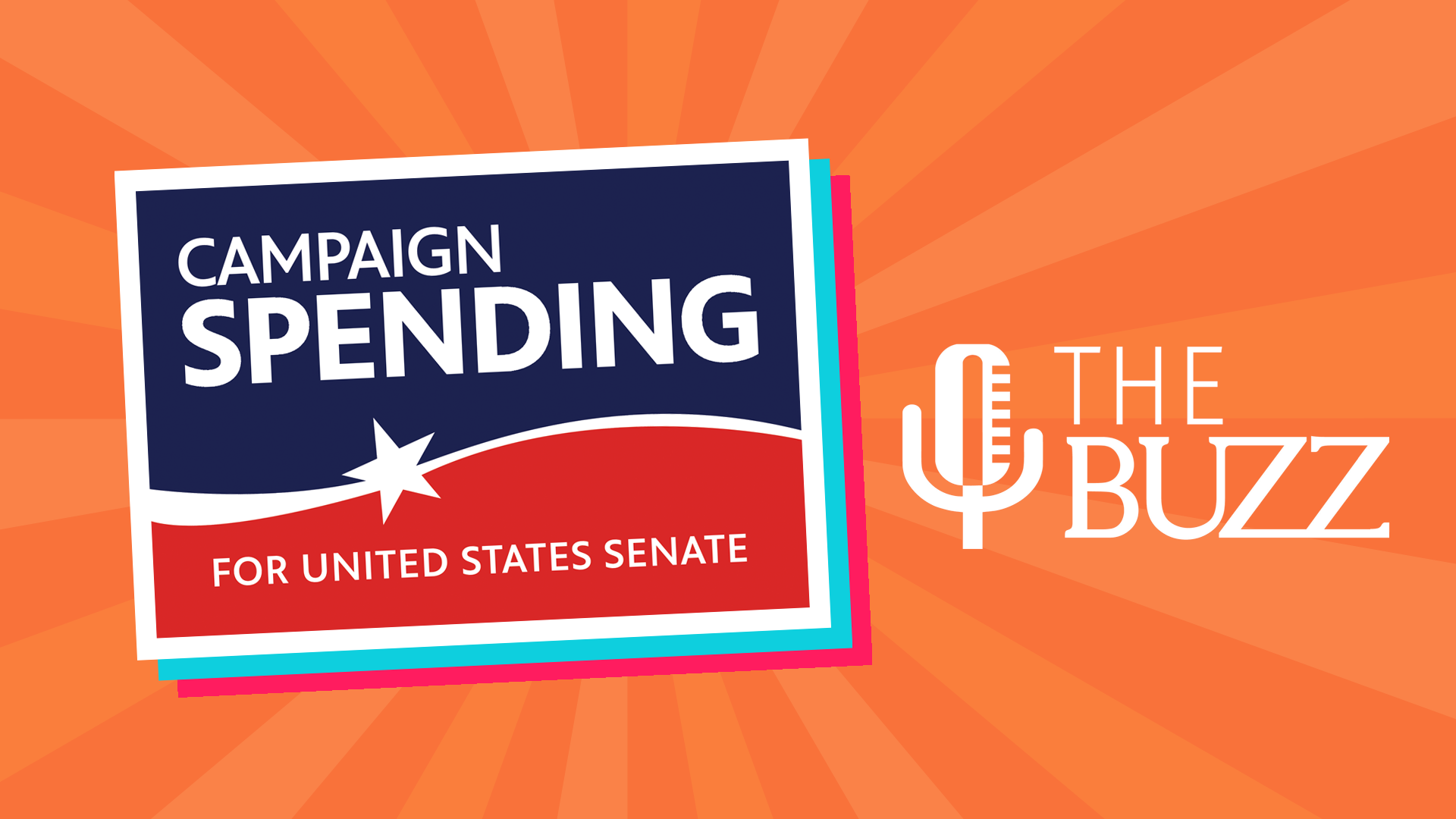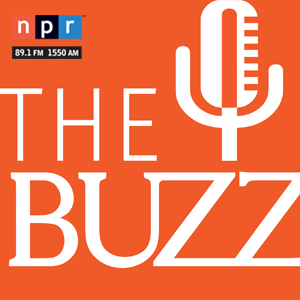 The Buzz looks at what it costs to run a U.S. Senate campaign in Arizona. We also explore the question of how effective those ubiquitous campaign signs are.
The Buzz looks at what it costs to run a U.S. Senate campaign in Arizona. We also explore the question of how effective those ubiquitous campaign signs are.
The Buzz for May 31, 2024

About a month ago, The Buzz looked into how campaigns in two high-profile federal elections raise money from in Arizona.
This week, we're focusing on how the participants in one of those races are spending money.
We start with one of the first items that let people know that election season is upon them, yard signs, mailers, and other physical media.
As technology progresses, it is easy to wonder if such physical media are beneficial or are little more than a nuisance or eyesore for voters.
A study from Vanderbilt University showed that, at least in some lower-level races where information is sparse, efforts aimed at increasing name recognition can be enough to boost a candidate's performance.
The study began with lab-based tests of how name recognition did but eventually escalated into an experiment using parents at a Nashville-area elementary school.
"We strategically placed yard signs with a fictitious candidate's name, a name that was not on the ballot, along the street that fed into an elementary school. And importantly, for our purposes, the street was one of two primary channels by which those parents who were approaching the school to drop off their children would take. In experimental terms, the parents' assignment to one route or another was as if random, which means that we had both a treatment and a control condition," said Elizabeth Zechmeister, the Cornelius Vanderbilt Professor of Political Science.
The school's PTO then sent out a survey as part of a fundraiser, and those who drove past the sign, which did not have any information beyond a name, were 10% more likely to place the fictitious candidate in their top three candidates.
But that name recognition bump can go away quite easily though.
"In a set of additional studies that we conducted in our lab, we tested this by subtly priming a candidate's name, and then instead of just stopping there and asking people about their preferences for that candidate or another in a hypothetical election, we included some additional information. We included information that was both explicit and relevant, and the information that we chose to include was that one of the two candidates is an incumbent. When we include that information, the mere name recognition effect is drowned out, it effectively goes away," said Dr. Zechmeister.
She said this shows the relatively low amount of information that people can use when voting on lower-level races.
"There are often races that place candidates into seats that are closer to us than large, high-profile elections. So city councils make decisions that affect our day-to-day lives, they allocate resources that may determine whether or not the pothole on my street gets filled or not. And that, arguably, is quite relevant to the quality of my life. And yet, we do tend as individuals, and as and I think, not trying to indict the media here, but yes, the media does tend to put a lot of focus on these very salient high information, high profile races. So perhaps it's a call to pay a bit more attention to these races. But I don't think it's an indictment of the average voter who may lean on mere name recognition to make a decision."
Regardless of the effectiveness of such media, candidates in Arizona's US Senate race spent notably on physical media such as yard signs and mailers.
In the first quarter of 2024, campaign finance reports show that Kari Lake has spent the most on physical media, $746,383, with $719,853 going largely toward mailers. Ruben Gallego spent $484,281 on physical media, with all but $5,417 going toward direct mail costs. Mark Lamb spent $57,018 on physical media, with most of that money going toward mailers, save $5,415 that reports say went to 'signage.' Kyrsten Sinema, who dropped out of the race in early March, did not have any expenses directly linked to physical media, though her campaign noted $2,323 spent on "Fundraising Catering & Postage".
Non-physical media, which includes advertisements in television, radio, and print, among others, was another area of notable expenditure. These ads are often bought ahead of time and can be a sign of how much voters will see from such candidates in the coming months. Ruben Gallego spent the most on what his campaign dubbed 'paid media' at $1,580,494. That does not include another $75,694 for media production, consulting, and monitoring. That compares to $28,492 spent on 'placed media' by Kari Lake, with another $16,900 on media production. Mark Lamb spent $10,000 on media production with no mention of ad buys, and Kyrsten Sinema's campaign finance did not mention any spending on media spending.
Candidates are spending on digital media also. Expenses earmarked for 'digital' efforts for Gallego were notably higher, totaling $1,094,184. Kari Lake spent less on 'digital' expenses than on physical media, $423,469. Kyrsten Sinema increased spending in this area, with $185,083 spent–those expenses notably included the phrase 'retainer' in their earmarking. At the same time, Mark Lamb spent $2,697.
Another common expense for campaigns are events that are often held to raise funds. Ruben Gallego's campaign spent $38,019 on expenses whose category included words such as event or catering, with $22,762 of that going toward "event/outreach consulting." Kari Lake, meanwhile, spent $24,237 on events. Kyrsten Sinema spent $7,157 on categories indicating they were for events.
Lake's biggest event expenditure seems to have been an event at Mar a Lago, a country club owned by former President Donald Trump. Her campaign spent $21,638 on facility rental and catering. Lake is not alone in spending at Mar a Lago.. Several candidates have spent money on facility rentals, catering, lodging, and other expenses at Mar a Lago, with nearly $1.3 million coming to the company from campaigns of candidates for the presidency and Congressional seats.
The reports are filled with other details that offer insight into how candidates are running campaigns and what their unique large expenses are. Ruben Gallego spent $342,523 on payroll and benefits such as insurance for employees. The only other campaign that mentioned payroll was Kyrsten Sinema at $26,974.
By comparison, the two Republican candidates spent considerably on consulting fees. Kari Lake's campaign had $760,079 spent on consultants for the quarter, and Mark Lamb's campaign had $170,932 in consulting fees. Sinema's campaign spent $122,244 on consultants.
Sinema's campaign spent the most on travel, airfare, and lodging at $90,528, with $41,988 of that going towards reimbursing security for travel expenses. Gallego spent $37,625 on travel-related expenses. Lake spent $33,608 on travel. And Lamb spent $1,373.
One important bit of context for all of this spending is the total portion of money spent and how much is being saved in the days leading up to an election. That amount, often known as burn rate, is something that pollster Mike Noble of Noble Predictive Insights said can be a key factor.
"Let's say you and I were hypothetically going against each other in a political election. I'm up 10 points in the polls or whatever, right? Well, you look at the campaign finance and I raise some money, but I got no cash available, like I got no gas in the tank when especially in the last 30 days of the election when folks are most paying attention. If I go dark in those last 30 days, because I don't have the resources, I'm probably gonna end up losing that race," he told The Buzz in April.
With a primary election two months away, the campaign of one of the two candidates running for the Republican nomination has spent the highest percentage of its income. Mark Lamb's campaign burned through $1.3 million, about 84% of its income by the end of the Q1 2024 report. By comparison, Kari Lake had spent $3.2 million, about 56% of total funds raised.
With no primary challenger, Ruben Gallego's campaign has spent $12.4 million, about 60% of its total funds raised. And with her campaign officially over, Kyrsten Sinema spent $7 million, about 41% of its total raised.


By submitting your comments, you hereby give AZPM the right to post your comments and potentially use them in any other form of media operated by this institution.